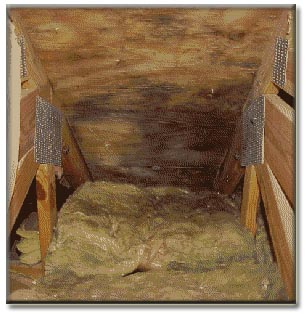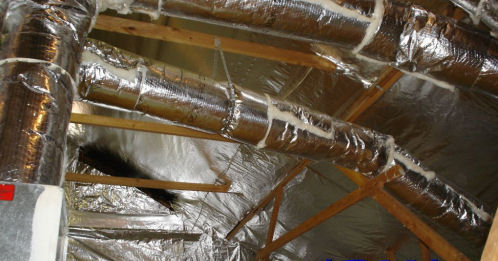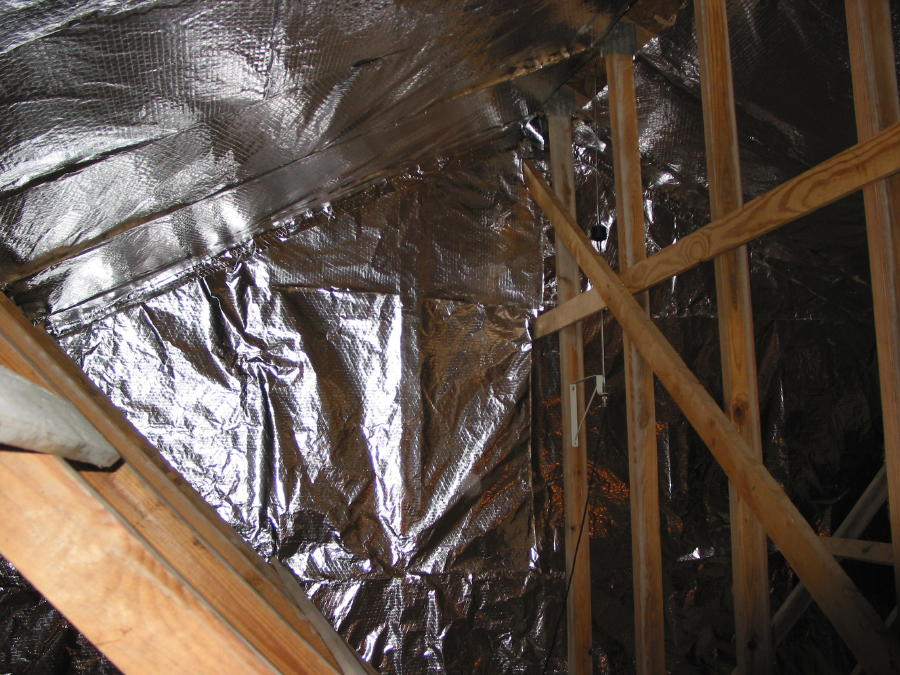| |
|
|
|
|
| |
|
|
|
|
| Cool Your Attic By Blocking Radiant Heat |
|
We have fielded many calls and emails regarding overheated.? Information available for the consumer has been sketchy, at best.?? We have seen many inappropriate and damaging ?solutions? for this problem.? The idea that ventilation will cool the overheated attic is a fallacy.? The addition of attic insulation will help, but it is not the total answer to the problem.?
The discussion of the addition of a Radiant Barrier System as the answer to the plaguing problem of overworked air conditioners and sweltering summer nights upstairs usually ends in a poorly designed system.? A poorly designed system may cause more damage than ever contemplated when the job was done wrong. |
|
|
 |
First, one should make sure that the attic is properly ventilated.? Next, adding insulation over carefully placed insulation baffles is the next step to comfortable and healthy living.? Controlling moisture is the key to success.? In the winter, moisture rises to the ceiling and passes through to the attic.? Especially with our modern, efficient house walls complete with energy efficient windows, the moisture contained in warm air pushes outward and easily passes through our modern building materials.? This is the reason we have posted commentary on this website regarding, what we call ?The House-Wrap Mentality.?? This trend of tightening up the exterior walls is totally wrong, in the absence of a formidable vapor barrier on the inside (warm side of the insulation).? |
|
|
|
|
|
|
|
 |
Moisture carried by warm air is in a gaseous state.? You will recall that when you enter a cold automobile, that your breath, containing warm moisture laden air, fogs up the windshield.? This is exactly what happens in mass scale on the underside of a cold roof deck.? See our page:? Moisture and the Warm Attic. |
|
Air gaps that allow warm air into the attic need to be sealed as tightly as can be achieved with a vapor barrier installed on the living side of the air leak, along with insulation. ?Once the insulation is completed, along with the ventilation work, the Radiant Barrier can be installed. |
The attic stairway is a common place where much heat and air conditioner energy is lost. Moisture is carried into the attic by way of this opening. According to the percentage of moisture in the home, mold and mildew can begin to grow on the condensed moisture in the attic.
We can install the zippered Stairway Cover while installing attic insulation and Radiant Heat Barrier. |
 |
|
|




|
The Radiant Barrier should be installed onto the attic side of the rafters (in a sloped roof attic).? This type of installation affords an air space that allows dissipation of hot air up and out of the attic.? It also ensures that less conductivity will occur to the attic side of the product.? Radiant Barriers should not be installed onto the back side of a roof deck.? This is a mistake made by the ill-informed.? The Radiant Barrier becomes a conductor of heat rather than a reflector of it. ??This is one reason that spray applications of Radiant Barrier Systems are not consistently effective.? About a 10% to 75% reflectivity has been measured from the spray applications.? Keep in mind that this Radiant Barrier is just that and it should not be installed onto roof decks with the application of a new roof.? This is a ridiculous application that is employed by fools.? Aluminum conducts heat and when in contact with the roof system, it will transfer heat right through to the attic.? The reflective nature of the product will not be significant in this application.??
Another consideration is with installation of a Radiant Barrier to the underside of a roof, damage may occur to the roof itself.? When radiant heat is reflected in whatever air is trapped in the system, some conduction occurs and with nowhere for the heat to go, the roof will overheat.? This is just another reason to make sure there is a space between the deck and the Radiant Barrier, and that proper intake and exhaust ventilation is provided.?
The type of heat we are endeavoring to reflect with the Radiant Barrier is ?radiant heat.?? Radiant heat travels through a gas or a vacuum.? Radiant heat brings heat to the attic floor and then the insulation captures much of it preventing it from entering the living space.? Radiant Heat Barriers, properly installed, have been proven to block 97% of the radiant waves entering the attic and in an attic where a 150+ degree Fahrenheit was taken before installation; a 95 degree reading was taken after installation.?
|
|
|
|
|
|
| Radiant Barriers have a near zero ?R? value.? Insulation, however, inhibits conduction and hence the ?R,? or resistance to the heat flow through the insulation.? Radiating heat causes conduction.? When your attic is so hot that it is making life miserable, it is because radiant heat has passed through the attic air and heated the solid objects and structure within the attic. Stopping most of the heat radiating down from the roof will lower energy costs and increase comfort tremendously. |
|
|
|
Ventilation, Insulation, and the Radiant Barrier work together to make your life much more comfortable and yoiur home much more energy efficientcy. There is no better money spent and a more cost effective, energy saving measure cannot be found, that dollar for dollar, saves you money and makes your life more comfortable.. |
|
|
|
| |
|
|
|
|
| |
|
|
|
|
